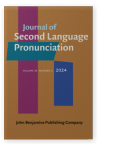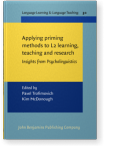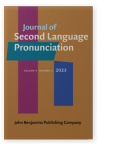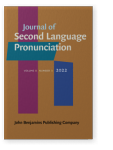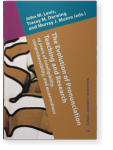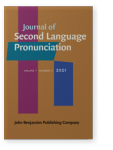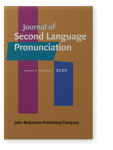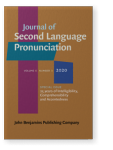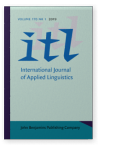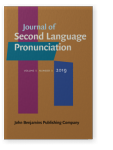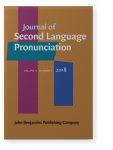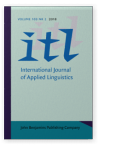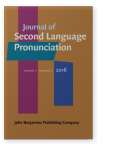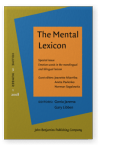Pavel Trofimovich
List of John Benjamins publications for which Pavel Trofimovich plays a role.
Journal
Title
Applying priming methods to L2 learning, teaching and research: Insights from Psycholinguistics
Edited by Pavel Trofimovich and Kim McDonough
[Language Learning & Language Teaching, 30] 2011. ix, 254 pp.
Subjects Applied linguistics | Language acquisition | Psycholinguistics
2023 Listener perceptions of customer service agents’ performance: Do comprehensibility, accentedness, and fluency matter? Journal of Second Language Pronunciation 9:2, pp. 234–262 | Article
This study investigated listener-based assessment of the job performance of second language (L2) speakers employed as customer service agents in outsourced foreign-based call centers, focusing on agents’ job performance as a function of the comprehensibility, fluency, and accentedness of their… read more
2022 Disentangling professional competence and foreign accent Journal of Second Language Pronunciation 8:3, pp. 413–443 | Article
This study examined listeners’ evaluations of first (L1) and second language (L2) English speech in work-related contexts. Ninety-six English-speaking listeners from Calgary rated audio recordings of 12 English speakers (6 L1 English, 6 L1 Tagalog) along three continua capturing one professional… read more
2022 Second language comprehensibility as a dynamic construct The Evolution of Pronunciation Teaching and Research: 25 years of intelligibility, comprehensibility, and accentedness, Levis, John M., Tracey M. Derwing and Murray J. Munro (eds.), pp. 153–179 | Chapter
This study examined longitudinal changes in second language (L2) interlocutors’ mutual comprehensibility ratings (perceived ease of understanding speech), targeting comprehensibility as a dynamic, time-varying, interaction-centered construct. In a repeated-measures, within-participants design,… read more
2021 Task engagement and comprehensibility in interaction: Moving from what second language speakers say to what they do Journal of Second Language Pronunciation 7:3, pp. 435–461 | Article
This exploratory study examined the relationship between second language (L2) English speakers’ comprehensibility and their interactional behaviors as they engaged in a conversation with fellow L2 speakers. Thirty-six pairs of L2 English university students completed a 10-minute academic… read more
2020 Testing the malleability of teachers’ judgments of second language speech Journal of Second Language Pronunciation 6:2, pp. 236–264 | Article
This study examined whether a negative social bias can influence how teachers evaluate second language (L2) speech. Twenty-eight teachers of L2 German from Western Canada – 14 native speakers (NSs) and 14 proficient non-native speakers (NNSs) – rated recordings of 24 adult L2 learners of German… read more
2020 Second language comprehensibility as a dynamic construct 25 years of Intelligibility, Comprehensibility and Accentedness, Levis, John M., Tracey M. Derwing and Murray J. Munro (eds.), pp. 430–457 | Article
This study examined longitudinal changes in second language (L2) interlocutors’ mutual comprehensibility ratings (perceived ease of understanding speech), targeting comprehensibility as a dynamic, time-varying, inter action-centered construct. In a repeated-measures, within-participants design,… read more
2019 Lexical aspects of comprehensibility and nativeness from the perspective of native-speaking English raters ITL - International Journal of Applied Linguistics 170:1, pp. 24–52 | Article
This study analyzed the contribution of lexical factors to native-speaking raters’ assessments of comprehensibility and nativeness in second language (L2) speech. Using transcribed samples to reduce non-lexical sources of bias, 10 naïve L1 English raters evaluated speech samples from 97 L2… read more
2019 Second language speakers’ awareness of their own comprehensibility: Examining task repetition and self-assessment Journal of Second Language Pronunciation 5:3, pp. 347–373 | Article
This study investigated whether second language (L2) speakers are aware of and can manipulate aspects of their speech contributing to comprehensibility. Forty Mandarin speakers of L2 English performed two versions of the same oral task. Before the second task, half of the speakers were asked to… read more
2018 Engaging the senses: A sensory-based approach to L2 pronunciation instruction for actors Journal of Second Language Pronunciation 4:1, pp. 46–72 | Article
This case study examined the benefits of a sensory-based approach for teaching second language pronunciation to actors, addressing the unique learning goal of nativelike speech for nonnative professional actors. Two French Canadian actors (Marianne and Sebastian) were followed over 10 weeks of… read more
2018 Structural alignment in L2 task-based interaction ITL - International Journal of Applied Linguistics 169:2, pp. 293–320 | Article
This study investigated L2 structural alignment, the tendency for interlocutors to re-use a syntactic structure present in recent discourse, focusing on two information-gap interactive tasks. Thirty-four university students from diverse language backgrounds, recruited from different academic… read more
2016 Linguistic dimensions of second language accent and comprehensibility: Nonnative listeners’ perspectives Journal of Second Language Pronunciation 2:2, pp. 160–182 | Article
The current study investigated the effect of listener status (native, nonnative) and language background (French, Mandarin) on global ratings of second language speech. Twenty-six nonnative English listeners representing the two language backgrounds (n = 13 each) rated the comprehensibility and… read more
2011 Chapter 11. Expanding the scope of priming research Applying priming methods to L2 learning, teaching and research: Insights from Psycholinguistics, Trofimovich, Pavel and Kim McDonough (eds.), pp. 241–249 | Article
2011 Chapter 1. Using priming methods to study L2 learning and teaching Applying priming methods to L2 learning, teaching and research: Insights from Psycholinguistics, Trofimovich, Pavel and Kim McDonough (eds.), pp. 3–17 | Article
2011 Chapter 5. When three equals tree: Examining the nature of phonological entries in L2 lexicons of Quebec speakers of English Applying priming methods to L2 learning, teaching and research: Insights from Psycholinguistics, Trofimovich, Pavel and Kim McDonough (eds.), pp. 105–129 | Article
In this study, we used auditory priming to examine the phonological content of lexical entries for adult second language speakers. In particular, we investigated whether, for native speakers of Quebec French, words like they and day as well as three and tree have identical (i.e., homophonous)… read more
2008 Feeling affect in a second language: The role of word recognition automaticity Emotion words in the monolingual and bilingual lexicon, Altarriba, Jeanette, Aneta Pavlenko and Norman Segalowitz (eds.), pp. 47–71 | Article
Anecdotal evidence from second language users and results from experimental studies indicate that affectively valent words are not always represented identically in a person’s first language (L1) and second language (L2) mental lexicons. The present study investigated whether such differences… read more
